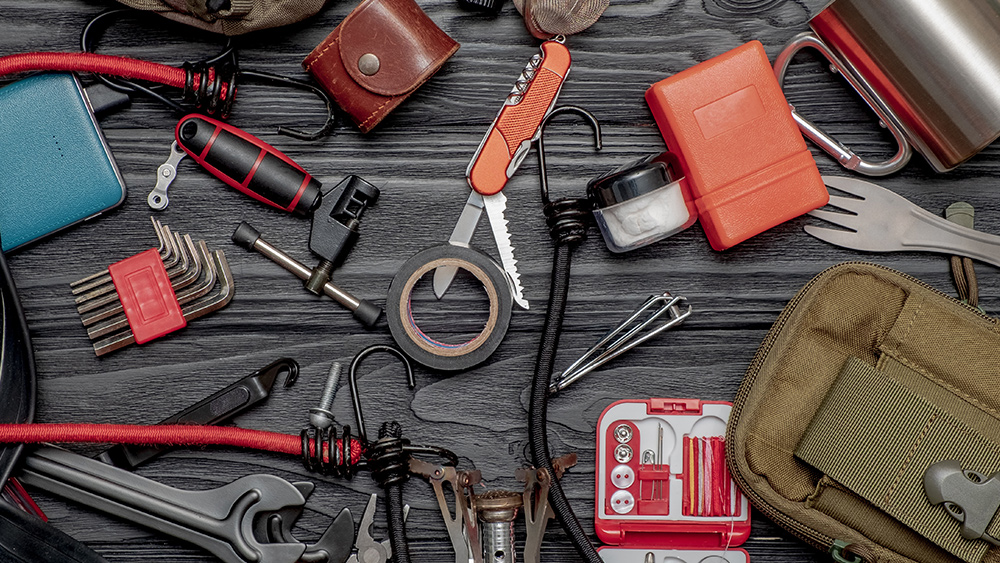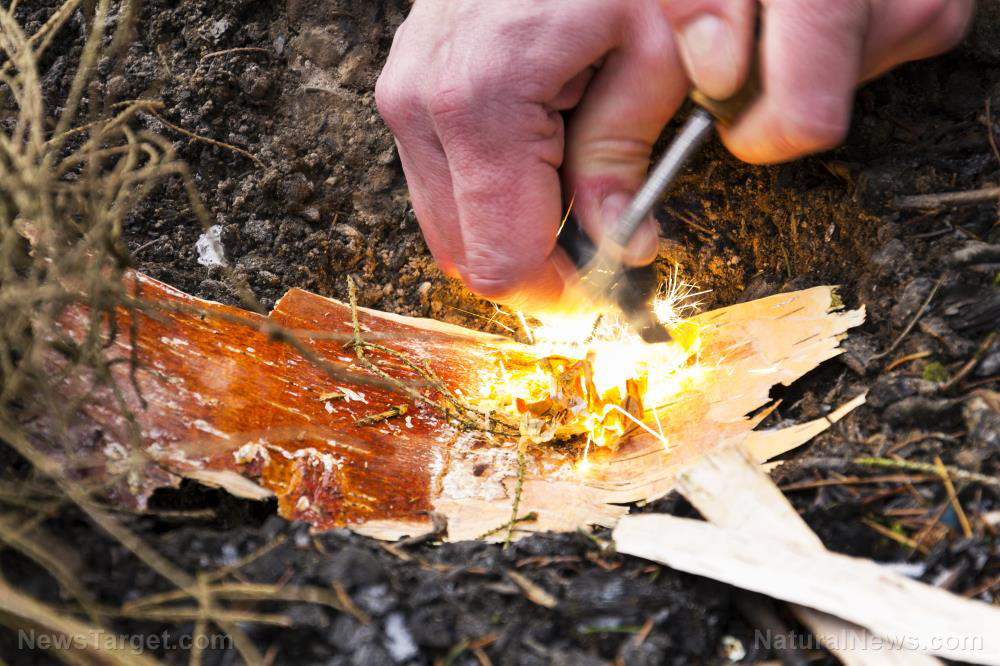Prepper must-haves: A beginner’s guide to preparing an everyday carry kit
05/12/2022 / By Zoey Sky

Preppers know that it’s impossible to prepare for every survival scenario, but having an everyday carry kit (EDC kit) in your bag or purse means you’ll be more prepared to deal with common issues when SHTF.
Detailed below are tips that can help beginners pack their own EDC kits for daily use. (h/t to Mind4Survival.com)
Understanding everyday carry
Everyday carry refers to the items you carry daily and can include various things like your wallet, keys, smartphone and personal protection gear.
The specific items that make up your EDC will vary depending on your lifestyle and needs, but there are some essential items that everyone should consider carrying. Carefully choosing the items in your EDC can help you prepare for common survival scenarios.
EDC goes beyond just the basics. If you have an EDC kit with you, you’ll be prepared for different situations like a natural disaster, a power outage or an attack by a mugger.
Carrying everyday carry gear like a flashlight, a pocket knife or a multi-tool can help you prepare for these scenarios.
Types of gear
EDC gear includes items that you can use to succeed at the goals of preparedness and survival. There are three types of gear within the seven levels of gear: passive, active and hybrid.
Passive gear
Passive gear includes items that you can operate without your direct, active input. Examples include clothes that offer protection from the environment, body armor or an alarm system that can help stop an opponent’s attack.
Active gear
Active gear includes items you have to actively be involved with to operate, like a flashlight or firearm. Active gear is anything else that requires your time, attention and proficiency.
Hybrid gear
Hybrid gear includes items that can be passive and those that you can take control of. For example, some drones can be pre-programmed to fly set routes, but you can also take over control and fly the drone to your chosen location.
Seven levels of gear
Before you organize your EDC gear, you need to understand the seven survival gear categories, which mirror the survival pyramid.
Level 1: Immediate survival gear
Immediate survival gear consists of the EDC essentials that you need to face a threat within 1/3 of a second of becoming aware of the threat.
Because of the very short response time, level 1 EDC includes self-defense items that are passively active, such as body armor and other forms of personal protective equipment.
Immediate survival gear also includes anything that you have “at the ready,” like the gun in your hands, which you can use within 1/3 of a second with proper training.
Level 2: Imminent survival gear
Imminent survival gear is the gear you can put into action between 1/3 of a second and three seconds of becoming aware of a threat.
This includes your appendix carry pistol or the pepper spray on your hip. Appendix carry refers to when your holster rests against your abdomen in the general location of your appendix.
Level 3: Emergent survival gear
Emergent survival gear is the kit you can use within three minutes of becoming aware of the need to put the item or items into action. These things can be found at the bottom of a cargo pocket, in a backpack or behind the driver’s seat.
Emergent survival gear includes things you may need in an emergency that aren’t something you routinely need to respond to within seconds. Examples of emergent survival gear include your multi-tool, which has wire cutters you can use to cut through wires in an escape scenario.
Level 4: Urgent survival gear
Urgent survival gear includes equipment and supplies needed to ensure survival from three hours to three days. These items must be easy to access, create and use.
According to the survival pyramid, you should find or create shelter within three hours to protect yourself from the environment. But do you have a pocket emergency shelter with you or the knowledge and tools to build one?
Tools that can purify water or carry it will likely fall into this category.
Level 5: Semi-urgent survival gear
Semi-urgent survival gear includes equipment and supplies that can help you survive from three days to three weeks. Semi-urgent survival gear needs to be accessible, creatable or usable.
Level 6: Delayed survival gear
Delayed survival gear includes equipment and supplies that can help you survive from three weeks to three months. This type of gear doesn’t need to be readily accessible or easy to use.
When SHTF, focus on what you’ll need to survive the most immediate threats.
Some examples of delayed survival gear are the tools you’ll need to turn a survival shelter into a comfortable living space. This category also includes tools you need to grow or obtain food.
Level 7: Long-term survival gear
You need the gear in this category to survive long-term survival scenarios, like those that might last three months or longer. These tools will help you rebuild your version of society.
Common mistakes to avoid when prepping your EDC kit
If it’s your first time to prep an EDC kit, avoid these common mistakes:
Overpacking
Remember, you’ll be carrying your EDC kit with you everywhere, every day. It needs to be light so you don’t get too tired while lugging your bag for work too.
Not focusing on the essentials
This relates to overpacking and you need to bring only essential tools, like a multi-tool or a pocket knife. No need to bring two different survival knives and a sharpening tool.
No variety
Your EDC kit needs to be versatile, so bring a basic first aid kit along with your snacks, water, multi-tool and flashlight.
Not checking your gear
Like the gear in your bug-out bag, you need to regularly check the gear in your EDC kit since these items have a shelf life and can become outdated or damaged over time.
Inspect your kit and replace expired or damaged items.
Only focusing on survival emergencies
Don’t make the mistake of thinking that an EDC kit is only for big emergencies. Your EDC kit can also be used to treat a small cut or fix a torn coat. (Related: Prepping before SHTF: 16 Items for your survival first aid kit.)
What to pack in your Primary EDC kit
Here are some useful things to include in your EDC kit:
- Basic first aid kit
- Basic sewing kit
- Knife
- Pepper Spray
- Pistol
- Reusable water bottle
- Small flashlight
- Snacks
- Watch
Before SHTF, prep your EDC kit so you can handle minor emergencies with a variety of useful tools.
Watch the video below to learn how to prep a “Mini Medi” EDC first aid kit.
This video is from The Urban Prepper channel on Brighteon.com.
More related stories:
Prepping basics: A 10-item checklist for beginner preppers.
Prepping basics: 4 Lists of essential survival supplies.
Items that you should carry with you every day… for the ultimate prepper.
Sources include:
Submit a correction >>
Tagged Under:
bug out, disaster, EDC kit, emergency, everyday carry kit, Gear, multipurpose survival tools, off grid, preparedness, prepper, prepping, SHTF, survival, survival gear, Survival Tips, survival tools, survivalist
This article may contain statements that reflect the opinion of the author
RECENT NEWS & ARTICLES
COPYRIGHT © 2017 DISASTER NEWS




















